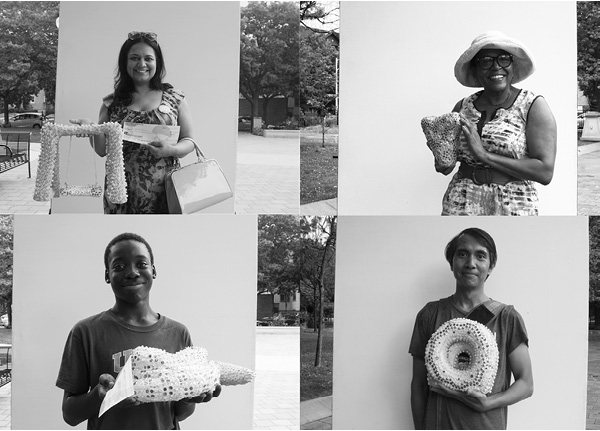
LOVE OVER MONEY
first performed on July 18, 2015
Buttercup Park, Chicago, IL
performed once in 2015
THE QUEEN OF LUXURIA
Lamar Gayles, Carron Little, Amy Sinclair and Nora Taylor
Chicago, IL
567632659c567632659a567632659r567632659r567632659o567632659n567632659l567632659i567632659t567632659t567632659l567632659e567632659@567632659g567632659m567632659a567632659i567632659l567632659.567632659c567632659o567632659m
carronlittle.com
LOVE OVER MONEY
THE QUEEN OF LUXURIA
I have been creating public interactive performances for the neighborhood of Uptown in Chicago for the past three years. The first performance was in a former bank building, and the last two have been in a local park called Buttercup Park. This year I produced an interactive work entitled “LOVE over MONEY” that was part of this trilogy. I have been deeply concerned about the level of poverty faced by communities in America. The trilogy has sought to highlight these concerns. This most recent performance in the series questioned art and the value we place on it while examining equal pay issues. I used current 2015 statistics for wage calculation that state, that on average, black women receive 56 cents to the dollar, black men receive 73 cents to the dollar, and white women 75 cents to the dollar. This impoverishment of earnings based on gender and race is at the heart of America’s important debate on equality.
The performance included a game where the public would receive a check that evaluated the money people hadn’t received throughout their working lives due to the gender or racial pay gap. With this money the public could discuss with me the value of art objects I had built based on the public dreams people had written on my performer’s bodies in 2014 at the same site. The public would then negotiate with me on how much to pay for the sculpture they had chosen. I would then deduct the agreed price from the original check and give them a new check. Each public participant received an authentication form from The Queen of Luxuria. I conducted a great deal of research on the art market for this performance and incorporated actual facts and figures into my individual conversations discussing ideas about how we value art in our lives. I also engaged participants in a conversation around how much they spent on art each year. This conversation encouraged the public to think about cultural investment and the importance of funding artists and analyzing the wealth gap that exists in the art world.